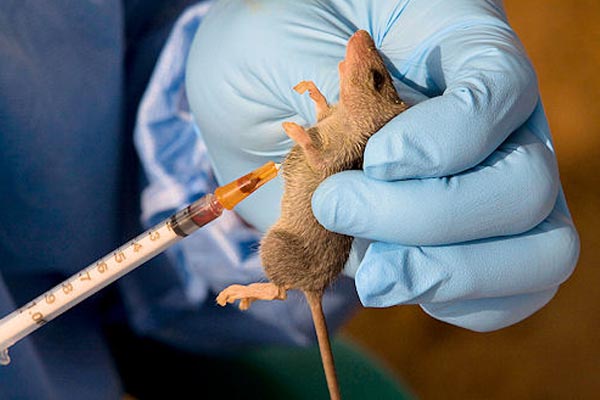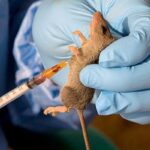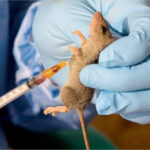Again, Lassa fever is taking its toll on Nigerians in the same way it has annually done around this season of the year. While it is disturbing that adequate environmental cautions are not being taken to inhibit its seasonal outbreak, it is more worrying that 54 years after its discovery in the country, Nigeria, from where the disease originated, has failed to produce a vaccine against the disease; making it the worst hit in history.
The Nigeria Centre for Disease Control and Prevention (NCDC) recently declared that 244 confirmed cases of Lassa fever in 16 states and the FCT had been registered. Since then, this figure has continued to grow. The Director General (DG) of NCDC, Dr Ifedayo Adetifa, in a statement, said the centre also recorded 37 deaths nationwide; with a 15.1 per cent fatality rate. The states where Lassa fever infections have been recorded so far include Ondo (90), Edo (89), Bauchi, Taraba, Benue, Ebonyi, Nasarawa, Plateau, Kogi, Anambra, Delta, Oyo, Adamawa, Enugu, Imo and the FCT. Statistics, then, show that Ondo was leading with 90 cases. It was followed by Edo which had 89 cases. About a week later, the number of confirmed cases in Edo rose to 115, with 113 deaths.
Dr Adetifa said one of the five health workers confirmed infected in the line of duty had died. He said NCDC had on January 20, this year activated a national multi-sectorial Emergency Operations Centre (EOC) to coordinate and strengthen ongoing response activities. The centre, according to him, is powered by officials of NCDC and those of relevant Ministries, Departments and Agencies (MDAs) and other stakeholders. He advised healthcare providers to report all suspected cases of Lassa fever to their local government’s disease surveillance and notification officer for immediate access to healthcare. This is because early diagnosis and treatment of cases can save lives.
The NCDC boss further explained that increased transmission had been recorded in 2023, compared to previous years, just as the number of states infected has risen.
Naira scarcity: Ignore calls for protest, El-rufai begs Kaduna residents
Unizik professor killed in Anambra
He noted that, “Healthcare workers have also been shown to be at increased risk of infection and death.”
Healthcare workers at high risk, Adetifa clarified, are those who clean and disinfect contaminated surfaces, materials and supplies without adequate protective gear; adding that laboratory workers who handle blood samples of suspected Lassa fever patients, as well as health personnel who handle bodies of patients that die from Lassa fever cases without appropriate precautions, are also at high risk.
The virus was first discovered in 1969 from a case diagnosed in Lassa, a town in Borno State of Nigeria. Lassa fever, also known as Lassa haemorrhagic fever (LHF), is a type of viral haemorrhagic fever caused by the Lassa virus. Rats and rodents are the natural carriers of the virus. It is transmitted to humans through contact with food or household items contaminated by infected rodents. Person-to-person transmission can also occur even in hospital environments if infection control measures are inadequate.
Although many of those infected by the virus do not develop symptoms, Lassa fever initially presents like other commonplace illnesses, accompanied by a fever. Other symptoms include headache, general body weakness, cough, nausea, vomiting, diarrhoea, muscle pain, chest pain, sore throat, and in severe cases, bleeding from ears, eyes, nose, mouth and other body openings. About a quarter of those who survive suffer hearing loss, which improves over time. Prevention requires isolating those who are infected and decreasing contact with rodents. Other efforts to control the spread of the disease include having a cat to hunt rodents in homes and storing food in sealed containers.
Knowing that Lassa fever is a seasonal disease with no vaccine yet for preventing infection, public health institutions should embark on enlightenment campaigns to educate the public on preventive measures against the disease well before the dry season sets in; the usual period of its outbreak. Nigerians should be educated to keep their homes clean as rodents are attracted to dirty environments. Drying foodstuff along the roads should be avoided to avert contamination. Bush burning which could displace rats from bushes to human dwellings should be discouraged. While households should be advised to cover dustbins, communities should set up dump sites which are common habitats for rats far from their homes. To achieve all these, public health workers (otherwise called duba gari in Northern Nigeria’s native authority days) should be empowered and strengthened to effectively implement the measures.
While it is cheering that the Usmanu Danfodio University Sokoto (UDUS) has produced a COVID-19 vaccine, it is disappointing that a vaccine against Lassa fever is still not available five decades after it was discovered. This is despite all the pharmaceutical research institutes in the country and the Lassa fever Specialist Teaching Hospital (ISTH) Treatment Centre at Irrua in Edo State. To avert the huge annual loss of lives from the disease, we call on government to show enough commitment in supporting relevant research efforts at producing a Lassa fever vaccine. NCDC is urged to collaborate with states in the provision of more testing laboratories. It is time to check Lassa fever.

 Join Daily Trust WhatsApp Community For Quick Access To News and Happenings Around You.
Join Daily Trust WhatsApp Community For Quick Access To News and Happenings Around You.
